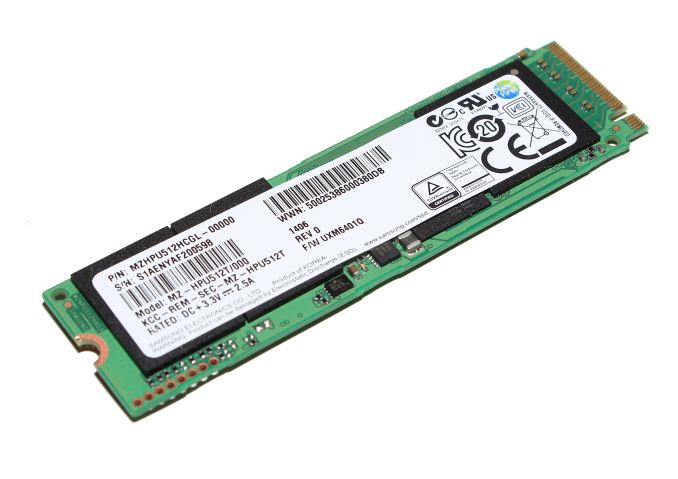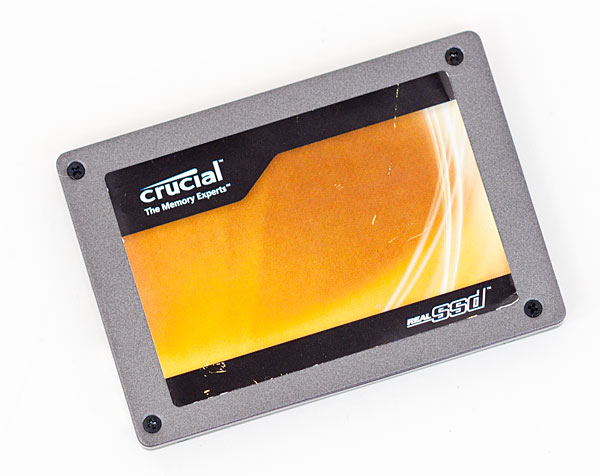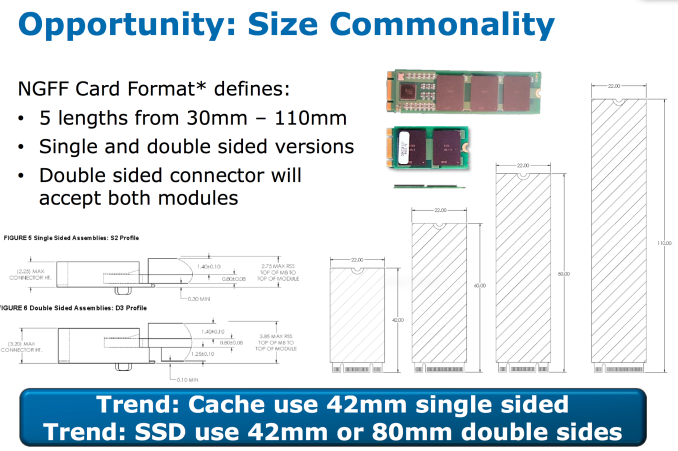Samsung SSD XP941 Review: The PCIe Era Is Here
by Kristian Vättö on May 15, 2014 12:00 PM EST
When SATA was introduced a bit over a decade ago, it provided major advantages over the old PATA interface. Not only was it faster and more power efficient thanks to the better signaling protocol, but the cabling was no longer big and clumsy with very limited length. It was no wonder that the industry quickly adopted SATA as the new interface for client storage and it has held its position throughout the years.
Since hard drives were the dominant storage media, SATA provided everything that the industry needed. The first generation SATA 1.5Gbps was already fast enough for the vast majority of use cases but about two years after the initial release of SATA, the second generation SATA was ready for prime time, doubling the throughput to 3Gbps. Even today's fastest hard drives can't fully saturate SATA 3Gbps, so there was obviously no rush to improve the interface as it already met the industry's needs. But that changed quickly around 2008.
The reason wasn't a sudden improvement in hard drive technology, but an emerging new technology that was based on non-volatile memory. We're talking about SSDs of course. The non-volatile memory part wasn't actually anything new as NAND has been around since the late 80s, but it was the first time NAND was being used in a PC form factor. Previously NAND had mainly been the choice for ultra mobile devices like MP3 players and phones but it was realized that the technology had the potential to be used in all computer-like devices, including PCs and servers. Since NAND was a solid-state semiconductor and it didn't have to rely on mechanical rotation, it allowed for much, much greater speeds. It's simply much faster to move electrons around a silicon chip than it is to rotate a heavy metal disk.
Obviously the first generation SSDs weren't all that fast and in many cases a traditional hard drive would still provide better sequential performance (although SSDs would destroy hard drives in a random IO workload). However, as the SSD companies learned to manage NAND and its characteristics better, the performance went up significantly. In 2009 we were already at a point where SATA 3Gbps was bottlenecking drives and a faster interface was needed to unleash the performance of NAND. Fortunately the Serial ATA International Organization (SATA-IO) had already released the standard for third generation SATA, which would again double the bandwidth to 6Gbps.
Crucial's C300
In 2010 we saw the first SATA 6Gbps SSD, Crucial's C300, make its appearance. Back then SATA 6Gbps wasn't integrated into chipsets yet and users had to buy a SATA 6Gbps PCIe card (or a motherboard with a third party SATA 6Gbps controller) to utilize the drive's full performance, but as soon as Intel was ready with their 6-series chipsets with native SATA 6Gbps support, every man and his dog came out with a SATA 6Gbps SSD.
But there was a problem. SATA 6Gbps still wasn't fast enough to meet the needs of SSD manufacturers as they were already able to saturate it. SATA-IO was given a difficult task: they would have to come up with a new standard with drastically better performance only a few years after the previous strandard had been announced. Not only would it have to be faster, but it also needed to be cost and power efficient. Instead of developing the SATA protocol further, which would have been expensive and time consuming, SATA-IO decided to utilize an existing interface found in every mainstream computer: PCI Express.
To allow backwards compatibility with the SATA interface, SATA-IO came up with two standards: SATA Express and M.2 (formerly NGFF). The idea behind SATA Express is that it routes PCIe and SATA 6Gbps signals to a single connector, which can then be used to connect either PCIe or SATA devices depending on the drive. It's mainly aimed at the desktop crowd and we did an extensive review of it just a while ago. M.2 on the other hand is the successor of mSATA and is electrically very similar to SATA Express. It also supports both PCIe and SATA 6Gbps signals, although ultimately it's up to the PC OEM to choose whether it will route both to the slot (i.e. you can have an M.2 slot with just PCIe or just SATA functionality).












110 Comments
View All Comments
BMNify - Thursday, May 15, 2014 - link
"They still do[es] not have one for PCIe-based Macs"so, just get the pci-e card above and use that or even a generic pcie to pci converter and you can install them in your PPC mac, and other systems too, weather they would be accessible booting anything other than a linux PPC distro is another matter OC
Penti - Thursday, May 15, 2014 - link
Macs with PCIe-based SSD's, obviously you could run a discrete PCIe-card (SSD) in a Mac Pro (but that would be SATA/RAID-based not PCIe). PCIe AHCI-based SSD's are only available directly from Apple and made by Samsung and Sandisk, and is only used in recent MBAir, MBP 13/15 and new Mac Pro as well as recent iMacs. There are no third party solutions yet. For previous generations there are solutions and before their own SATA-card SSD they used 2.5-inch drives everywhere except in the Airs. For the 2008/2009 MBA with 1.8-inch drives there are solutions available too. At PowerPC based macs you have either SATA or IDE natively. They just haven't figured out how to produce a PCIe-based SSD for the Macs yet. Over at OWC or anywhere else.RamCity - Thursday, May 15, 2014 - link
Just in case this part was missed in the review here, the XP941 is widely compatible (when installed with an adapter) in the pre-2013 Mac Pro's - all the way back to the 2006/2007 models. The Barefeats.com review is worth a look if you want more information.http://barefeats.com/hard183.html
Penti - Friday, May 16, 2014 - link
The thing I was referring too is that it's not compatible and neither has any compatible modules been made yet for the PCIe-based SSD's of the newer Macs. While earlier SATA-based Apple-custom cards had third party solutions that worked. XP941 is obviously used with a early 2009 Mac Pro with boot-support in the review. So we have number right here. PPC-based systems wouldn't boot it however, even if you might get a Linux-system to recognize it. Which is so far off topic that it's incredible.Penti - Friday, May 16, 2014 - link
Obviously when they have figured out the new connector from Apple the PCIe based controllers should run fine over there on third party cards. Now they just don't exist yet. Like for the thread starters MacBook Pro.Penti - Friday, May 16, 2014 - link
And a early 2013 MBP with SATA-based SSD can use after market SSD's, but not the ones with PCIe yet.Hrel - Thursday, May 15, 2014 - link
256GB SSD, about $100. This one is over $300. Increased speed is nice, but it doesn't matter until they can do it at a better price, closer to the SATA prices the better.I'd be willing to be an early adopter at $200, but I couldn't recommend it to most people until it dropped to $100. I've only recently been able to start recommending SATA SSD's to normal people who don't obsess over every new computer tech.
MrSpadge - Thursday, May 15, 2014 - link
Yeah.. at 3 times the price you'd be far better off using 2 or 3 regular SSDs in RAID - unless you don't have the space and SATA slots for that, like in a mobile workstation.Babar Javied - Thursday, May 15, 2014 - link
Remember when SSDs first came out? they were expensive. But they steadily came down in price and I am sure this will too in due time. Keep in mind that this is new tech and bond to be expensive at first... hell, there is isn't even proper support for it yet.JoyTech - Thursday, May 15, 2014 - link
The benchmark tests only lists results for 512 GB version of Samsung SSD XP941. Are the results same for 256 GB and 128 GB? It is really confusing that this article and previous ones, don't provide those results!